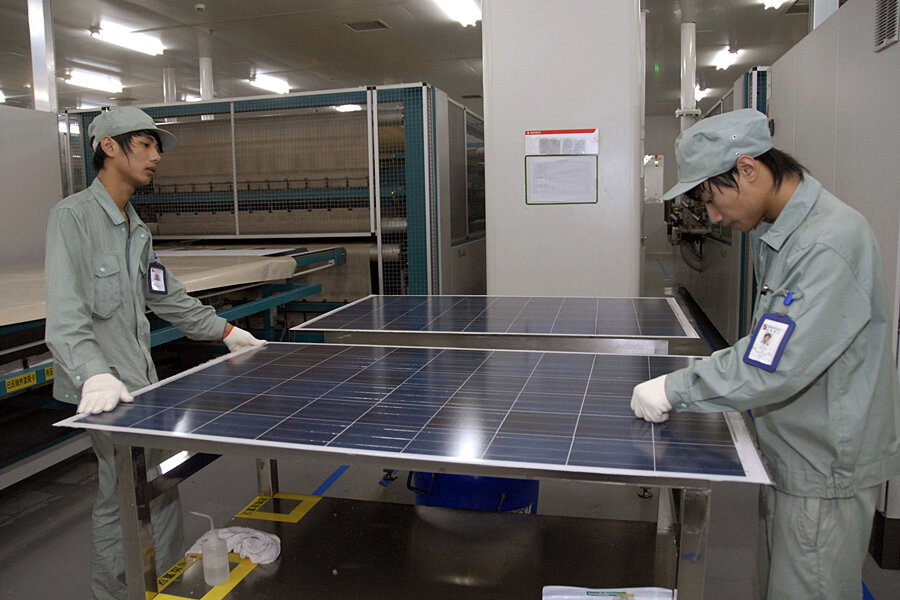Is China on the brink of a solar power breakthrough?
Loading...
Many people, even fanatical advocates of solar power, are unaware quite how close we are to reaching a critical milestone in the industry. Within a fairly short space of time, solar generated electricity will be fully cost competitive with coal-powered electricity – at least if the governments of the world’s two largest energy consuming nations have their way.
Both the US and China have a stated goal of reducing the cost of solar generated electricity to that level, and quickly. How they are going about it says a lot about how each economic system works.
In the US, despite the complaints of some that a drift toward government control is taking place, private initiative and free markets still rule. The Department of Energy launched the SunShot initiative in 2011, with a stated goal of reducing the cost of solar power to be fully competitive with conventional energy sources by the end of this decade. The program funds grants, incentives and competitions to encourage private sector research that will improve the efficiency and lower the cost of solar energy.
The Chinese, faced with what is in many ways a more urgent need to achieve the same thing, have taken a different approach. In a manner more in keeping with their history and current economic system, they are beating the problem over the head with piles of cash until the desired outcome is achieved. It looks, if this excellent Michael Sankowski piece at Monetary Realism is to be believed, as if they are getting mighty close.
Sankowski maintains that, driven by high levels of pollution and national security concerns, the Chinese government asked a question back in the early 2000s: “How Much Will It Cost To Make Solar Cheaper Than Coal?” The answer was based on Swanson's Law that states that every doubling of photovoltaic (PV) solar capacity results in a 20 percent reduction in unit cost. Testing that theory, because of low levels of production at that time, would only have cost around $10 billion -- a small price to pay for the chance of cheap, clean energy that didn’t rely on importing coal from Australia.
When Swanson’s Law still worked after a couple of doublings of capacity the Chinese government stepped up their efforts. As a result, Suntech now expects the goal to be achieved by 2016, or 2017 at the latest. That’s right: 2016. A couple of years. Of course, Suntech has an interest in exaggerating somewhat, but even so, that is stunningly close.
According to the US Energy Information Administration, coal accounted for 69 percent of China’s energy production as recently as 2011. Cost comparative solar power and a centralized government committed to change will make that number laughable in a few years. (Related Article: Are We At The Dawn Of The Zero Energy City?)
It should be borne in mind that reducing the cost of solar electricity to parity with coal in China is not the same as it is in America, if for no other reason than that electricity in general, and coal-powered electricity in particular, is more expensive in China than in the US.
SunShot, however, has also been successful, and claims a 60 percent reduction in cost since its inception three years ago. Many believe that their stated goal of solar power at $0.06 per kilowatt hour (kWH) is achievable by 2018. Some of that cost reduction is no doubt down to China ramping up capacity at such a rate and flooding the market, but there have been technological advances over that time, as well.
You can argue all day about which approach is correct. History shows us that innovation from the private sector is the most effective, long lasting change agent there is, but the Chinese approach of heavily subsidizing a massive increase in PV production capacity has been effective. Unfair, short sighted and disruptive, maybe, but effective nonetheless.
Command economies may be terrible at some things but when the rapid marshalling of resources is needed to solve a problem they can be very good at doing whatever it takes.
The simple fact is that with both innovation and increased capacity, the cost of solar energy has fallen considerably over the last few years and continues to do so. If, as looks likely, it does become truly cost comparative with coal in the next few years, then the days of cheap, clean, renewable energy dominating the world’s two biggest energy markets may be closer than you think.







